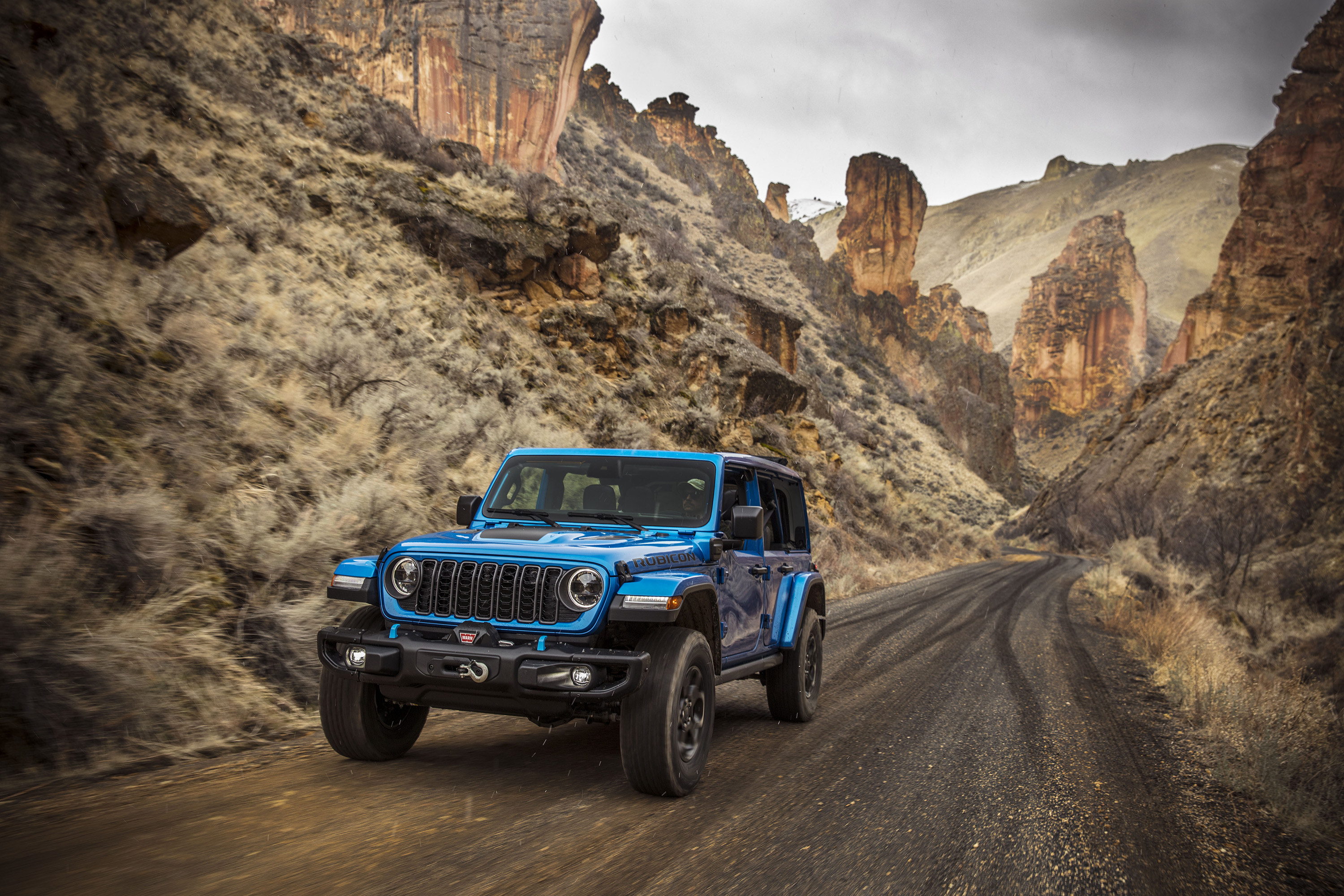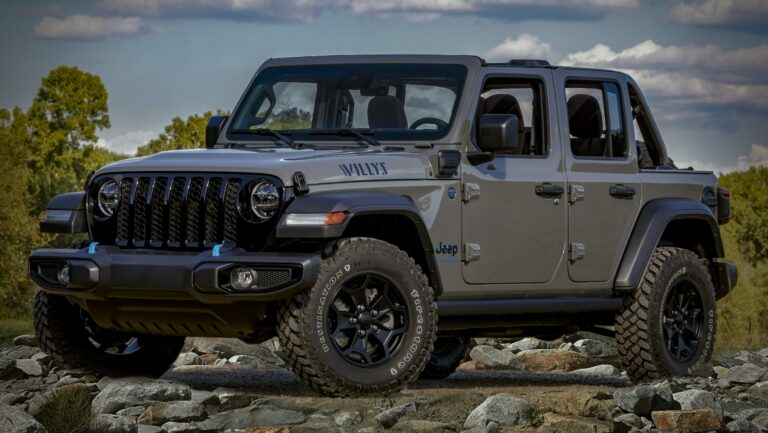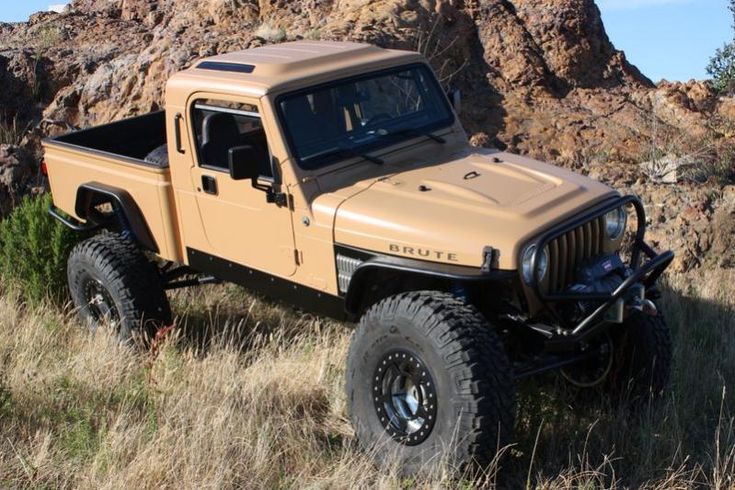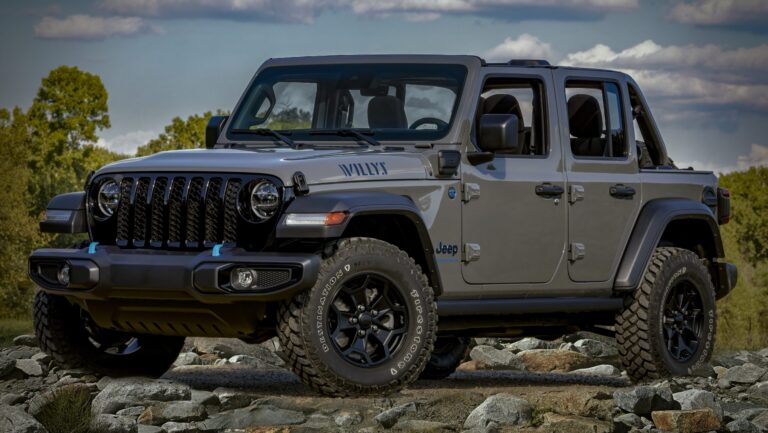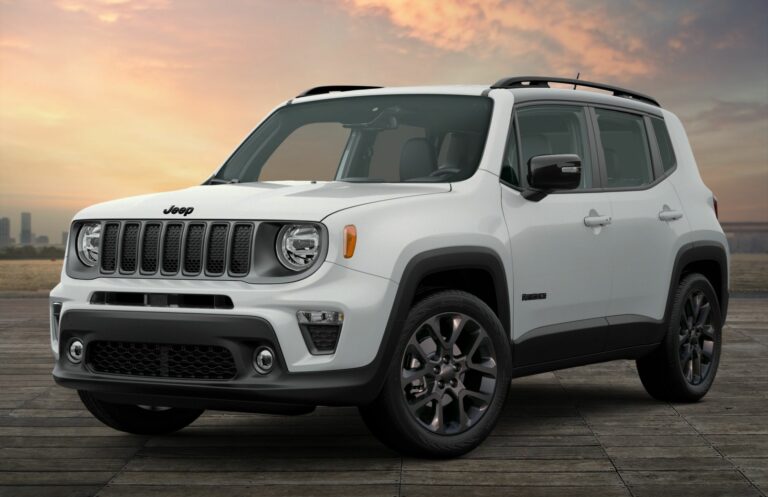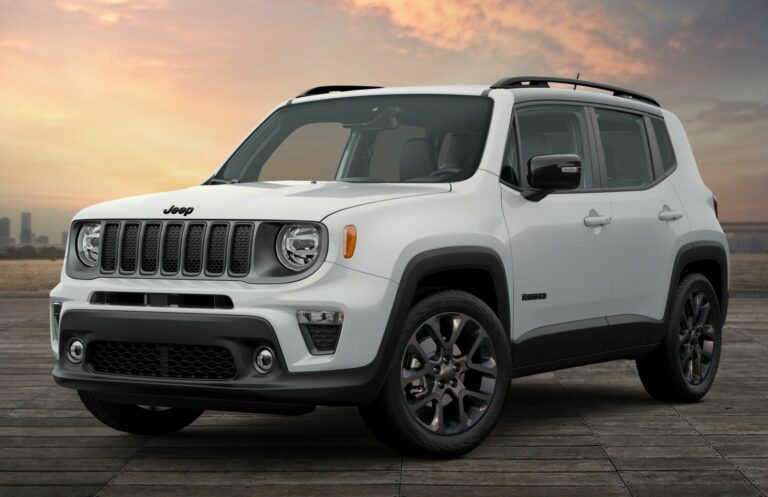Jeep CJ Project For Sale: Your Ultimate Guide to Finding, Assessing, and Restoring an American Icon
Jeep CJ Project For Sale: Your Ultimate Guide to Finding, Assessing, and Restoring an American Icon jeeps.truckstrend.com
The allure of a classic Jeep CJ is undeniable. For many, it’s more than just a vehicle; it’s a symbol of freedom, adventure, and rugged American heritage. While fully restored CJs command premium prices, a significant segment of enthusiasts turns to "Jeep CJ Project For Sale" listings. These are not pristine, showroom-ready machines, but rather opportunities – raw canvases awaiting the touch of a dedicated restorer or custom builder.
This comprehensive guide delves into everything you need to know about navigating the world of Jeep CJ projects. From understanding what constitutes a "project" to practical advice on assessment, restoration, and where to find your next adventure, we’ll equip you with the knowledge to turn a diamond in the rough into a polished gem.
Jeep CJ Project For Sale: Your Ultimate Guide to Finding, Assessing, and Restoring an American Icon
I. Why Invest in a Jeep CJ Project? The Appeal of the Unfinished
A Jeep CJ project isn’t for everyone. It demands time, patience, and often a significant investment beyond the initial purchase price. So, what drives individuals to take on such a challenge?
- Nostalgia and Classic Status: The Jeep CJ series (CJ-5, CJ-7, CJ-8 Scrambler) holds an iconic place in automotive history. Owning and restoring one is a way to connect with that legacy, preserving a piece of Americana.
- Cost-Effectiveness (Initially): A project vehicle is almost always significantly cheaper upfront than a completed, turn-key CJ. This makes ownership accessible to a broader range of enthusiasts, especially those on a budget who are willing to invest their own labor.
- Unparalleled Customization Potential: A project CJ is a blank slate. Whether you envision a meticulous, period-correct restoration, a lifted off-road beast, a street-legal cruiser, or a unique hybrid, you have the freedom to build it exactly to your specifications. You control every component, from the engine swap to the paint color.
- The Learning Experience: For many, the joy is in the journey. Tackling a CJ project offers an invaluable opportunity to learn mechanical skills, welding, bodywork, electrical systems, and problem-solving. It’s a rewarding hands-on education.
- Investment Potential: A well-executed restoration or a thoughtfully customized build can significantly increase the vehicle’s value. While not always the primary motivation, a completed CJ can be a solid asset.
- The Satisfaction of Creation: There’s immense pride in taking something neglected and bringing it back to life, knowing every bolt and weld was your effort.

II. Understanding the "Project" Spectrum: What You Might Find
The term "Jeep CJ Project For Sale" is broad. It can range from a collection of parts to a running vehicle needing significant work. Understanding these categories will help you set realistic expectations and identify what aligns with your skills and budget.
- Basket Cases (The Ultimate Challenge): These are often the cheapest and most daunting. You might find a frame, a body tub, and various components in boxes – or even a disassembled vehicle with many missing parts. Requires extensive fabrication, welding, complete drivetrain sourcing, and a deep understanding of CJ mechanics. Ideal for experienced fabricators or those aiming for a full custom build.
- Rolling Chassis: A step up from a basket case. This typically includes the frame, axles, suspension, and steering. A body tub might be present, but often in rough shape. The engine, transmission, and transfer case are usually absent. This is a good starting point for someone who wants to choose their own drivetrain and build from the ground up, with less initial disassembly.
- Partial Restoration: These projects have had some work done. Perhaps the frame has been cleaned and painted, the engine rebuilt and installed, or some body panels replaced. While more expensive, they offer a head start, saving you time on initial teardown and assessment. However, thoroughly inspect the quality of the work already performed.
- Running but Rough: These CJs technically run and drive, but they are far from roadworthy. They’ll need significant mechanical overhauls (engine, transmission, brakes, steering), extensive rust repair, bodywork, new wiring, and a complete interior and paint job. This type allows you to drive the vehicle (carefully) during the restoration process, which can be motivating. They are typically the most expensive project type but require less foundational work than a basket case.
- Donor Vehicle: Sometimes, a "project" is bought purely for its parts. This might be a complete but very rusted CJ, or one with a good engine but a damaged frame. Useful if you already own a CJ and need specific components or plan a highly customized build using parts from different models.


Things to Look For Across All Types:
- Rust: The absolute enemy of any CJ. Inspect the frame (especially around spring hangers, skid plate mounts, and steering box), body tub (floorboards, rocker panels, rear corners), fenders, and tailgate. Surface rust is manageable; extensive rot requires welding and panel replacement.
- Title Status: Crucial! Ensure the vehicle has a clear title in the seller’s name. Verify the VIN matches the title and the vehicle. A missing or salvage title can create legal nightmares.
- Completeness: Are critical parts missing? Drivetrain, wiring harness, interior components, trim? Missing parts can be expensive and time-consuming to source.
- Previous Modifications: Not all mods are good mods. Look for shoddy wiring, poorly executed lifts, or frame alterations that could compromise safety or structural integrity.
III. Key Considerations Before Buying
Before you pull the trigger on a "Jeep CJ Project For Sale," ask yourself these critical questions:
- Budget Beyond Purchase Price: The purchase price is just the tip of the iceberg. Factor in the cost of tools, replacement parts (engine components, suspension, brakes, electrical, body panels, interior), paint, and potentially professional labor for specialized tasks (welding, engine machining). A full restoration can easily cost $10,000-$30,000+ in addition to the vehicle’s initial price.
- Skill Level & Time Commitment: Be brutally honest with yourself. Do you have the mechanical aptitude, welding skills, and patience? Restoration is a marathon, not a sprint. A typical full frame-off restoration can take hundreds, if not thousands, of hours over several years.
- Space & Resources: Do you have a suitable workspace (garage, shop)? Do you have access to necessary tools (welders, air compressors, specialized wrenches)? Where will you store parts?
- Purpose of the Build: What will the finished CJ be used for? A daily driver, a weekend trail rig, a show vehicle? Your purpose will dictate the level of restoration, parts quality, and overall budget.
- Support Network: Are there local Jeep clubs, online forums, or knowledgeable friends who can offer advice and support? A community can be invaluable.
IV. Essential Steps After Acquiring Your CJ Project
Once you’ve found your project and brought it home, the real work begins. Here’s a general roadmap:
- Thorough Assessment & Documentation: Before turning a single wrench, take hundreds of photos from every angle. Document wiring, hose routing, and component placement. Create a detailed "punch list" of all identified issues and needed parts. This is your project blueprint.
- Safety First: If it’s a running project, inspect brakes, steering, and tires immediately. Address any critical safety issues before moving or working on it extensively.
- Disassembly & Cleaning: Carefully disassemble the vehicle, labeling and organizing every part. Clean components thoroughly. Consider media blasting the frame and body tub to expose all rust and provide a clean surface for new coatings.
- Rust Repair & Bodywork: This is often the most time-consuming and challenging phase. Cut out all rusted metal and weld in new patch panels or replacement body sections. Ensure proper alignment and structural integrity.
- Frame Inspection & Reinforcement: Inspect the frame for cracks, bends, or severe rust. Repair as needed. Many restorers opt to reinforce critical areas, especially for off-road use.
- Drivetrain Overhaul: Rebuild or replace the engine, transmission, transfer case, and axles. This is where many enthusiasts upgrade for more power or off-road capability.
- Suspension & Steering: Replace worn leaf springs, shocks, bushings, and steering components. Consider a lift kit or upgraded steering for off-road performance.
- Electrical System: Old Jeep CJ wiring harnesses are notorious for issues. Many restorers opt for a complete new wiring harness to ensure reliability and safety.
- Paint & Interior: After all structural and mechanical work is done, prepare the body for paint. Install new seats, carpet, dashboard components, and a roll bar.
V. Where to Find Jeep CJ Projects For Sale
The hunt for your ideal CJ project can be part of the adventure.
- Online Marketplaces:
- Craigslist & Facebook Marketplace: Excellent local sources. Search broadly and be prepared to travel. Many private sellers list here.
- eBay Motors: Good for finding projects nationwide, but shipping costs can be significant.
- Dedicated Forums & Groups: Websites like "JeepForum.com," "CJ-8.com," or specific Facebook groups for CJ enthusiasts often have "For Sale" sections. These communities are invaluable for advice and finding well-documented projects.
- Classic Car Dealers/Auctions: Less common for true "projects," but occasionally a dealer might have an unfinished restoration or a trade-in that qualifies.
- Word of Mouth: Let local mechanics, off-road shops, and classic car enthusiasts know you’re looking. Many great finds happen through personal connections.
- Salvage Yards/Farm Sales: While rare, you might stumble upon a forgotten CJ on an old farm or in a specialized salvage yard. These are often the ultimate "basket cases."
VI. Potential Challenges and Solutions
Undertaking a CJ project is not without its hurdles.
- Hidden Rust: Assume there’s more rust than you initially see.
- Solution: Thorough inspection (tap with a hammer, use a magnet), media blasting to expose all issues, and budget for professional welding if needed.
- Missing or Hard-to-Find Parts: Especially for older CJs (CJ-5s) or specific rare options.
- Solution: Utilize online forums and specialized reproduction parts suppliers (e.g., Quadratec, Morris 4×4, Omix-ADA, Crown Automotive). Sometimes, a donor vehicle is the best solution.
- Scope Creep: The project expands beyond original plans, increasing time and cost.
- Solution: Set a clear plan and budget from the start. Prioritize essential repairs first. Be disciplined about "while I’m in there" additions.
- Mechanical Issues Beyond Repair: A seized engine or completely rusted-out transmission.
- Solution: Factor in the cost of a full rebuild or replacement. Many choose modern engine swaps for reliability and power.
- Lack of Specialized Tools: You might need a welder, engine hoist, press, etc.
- Solution: Rent tools, borrow from friends, or invest gradually as needed. Some tasks may require professional help.
- Burnout: The sheer scale of the project can be overwhelming.
- Solution: Set small, achievable goals. Celebrate minor victories. Take breaks. Join a community for support and motivation.
Price Table for Jeep CJ Project For Sale
It’s important to note that prices for "Jeep CJ Project For Sale" vehicles are highly variable based on location, specific model (CJ-5, CJ-7, CJ-8), overall condition, completeness, and market demand. The table below provides generalized ranges.
| Project Type | Typical Price Range (USD) | Condition/What’s Included | Work Required | Ideal Buyer |
|---|---|---|---|---|
| Basket Case | $500 – $2,500 | Disassembled, frame, body tub, axles (often separate), no drivetrain, many missing parts. | Full restoration from ground up; requires extensive fabrication, welding, complete drivetrain sourcing. | Experienced fabricator, full custom builder, low budget, high skill. |
| Rolling Chassis | $1,500 – $4,000 | Frame, axles, suspension, steering. May or may not include a body tub (often rough). No engine/transmission. | Drivetrain installation, full bodywork, wiring, interior, paint. Significant mechanical and body skills. | Enthusiast wanting to choose their own drivetrain, good fabrication skills. |
| Partial Restoration | $3,000 – $8,000 | Some work started (e.g., new frame, rebuilt engine installed, some bodywork). Still needs completion. | Finish bodywork, paint, wiring, interior, minor mechanical fixes, final assembly. Varies greatly. | Buyer with some skills, less time for initial tear-down, willing to complete. |
| Running but Rough | $5,000 – $15,000+ | Drives and runs, but needs significant mechanical overhaul, extensive bodywork, rust repair, paint, interior. | Major mechanical refresh, comprehensive bodywork, rust repair, full repaint, interior, electrical. | Buyer wanting to drive it while restoring, moderate skills, higher budget. |
| Donor Vehicle | $1,000 – $3,000 | Often a complete vehicle, but very rusted or mechanically compromised, bought for specific parts. | Primarily for parts harvesting; may require salvaging key components from a dilapidated vehicle. | Someone with another CJ needing parts, or planning a hybrid build. |
Note: These ranges do not include the cost of restoration, which can easily add tens of thousands of dollars to the total project cost.
Frequently Asked Questions (FAQ)
Q: How much does it cost to restore a Jeep CJ project?
A: Beyond the purchase price, a full, high-quality restoration can range from $10,000 for a very DIY, budget-conscious build to $30,000-$50,000+ for a professional, frame-off restoration with new components and paint. It heavily depends on your skill level, how much work you do yourself, the extent of rust, and the quality of parts you choose.
Q: How long does a Jeep CJ project take?
A: This varies wildly. A simple running-but-rough project might take 6-12 months of dedicated weekend work. A full frame-off basket case restoration can easily take 2-5 years or more, especially for amateur restorers working in their spare time.
Q: Are parts readily available for CJs?
A: Generally, yes! Due to their popularity, there’s a robust aftermarket for reproduction parts, and many original components can still be found. Major retailers specialize in CJ parts, making most items accessible. Some specific trim pieces or very early CJ-5 components can be harder to source.
Q: Which CJ model is best for a project (CJ-5, CJ-7, CJ-8)?
A:
- CJ-5: The shortest wheelbase, very nimble off-road, classic look. Less interior space, can be harder to find parts for earlier models.
- CJ-7: The most popular, longer wheelbase than the CJ-5, offering more stability and interior room. Excellent parts availability. Often considered the best all-around choice.
- CJ-8 Scrambler: The rarest and most expensive, with a long wheelbase and pickup bed. Highly desirable. Great for hauling gear or unique builds, but parts can be pricier.
The "best" depends on your intended use and budget.
Q: Do I need special tools to restore a CJ?
A: For a comprehensive restoration, you’ll benefit from tools like a welder, angle grinder, air compressor and tools, engine hoist, press, jack stands, and a wide array of hand tools. However, you can acquire these over time or rent/borrow for specific tasks.
Q: Can a restored CJ be a daily driver?
A: Yes, but with caveats. Original CJs lack modern safety features, comfort, and fuel efficiency. A fully restored or restomodded CJ with updated suspension, steering, brakes, and potentially a modern engine swap can be a reliable and enjoyable daily driver, but it will still be a classic vehicle requiring more maintenance and a different driving experience than a modern car.
Concluding Summary
The journey of acquiring and restoring a "Jeep CJ Project For Sale" is an incredibly rewarding endeavor. It’s a testament to patience, skill, and a passion for these timeless vehicles. While it presents its challenges—from hidden rust to the vast time commitment—the satisfaction of transforming a neglected shell into a roaring, road-ready icon is unparalleled.
By carefully assessing your budget, skill level, and the condition of the potential project, you can embark on a journey that not only results in owning a piece of automotive history but also provides invaluable learning experiences and memories. So, if the call of the classic Jeep is strong, dive into the world of CJ projects. Your next adventure is waiting.
